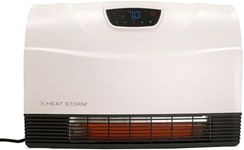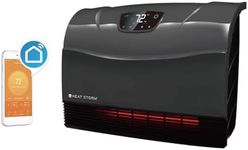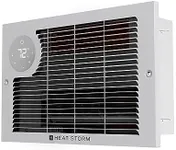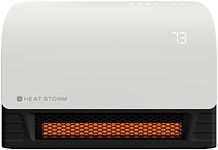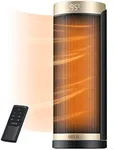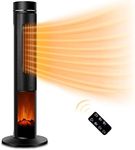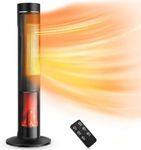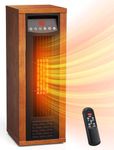Buying Guide for the Best Wifi Heaters
When choosing a WiFi heater, it's important to consider several key specifications to ensure you get the best product for your needs. WiFi heaters offer the convenience of controlling your heating system remotely, which can be a great addition to your home, especially during the colder months. Here are some key specs to look out for and how to navigate them to make the best choice for you.Heating CapacityHeating capacity is measured in watts (W) or British Thermal Units (BTUs) and indicates how much heat the heater can produce. This is important because it determines how effectively the heater can warm up a space. For small rooms, a heater with a lower capacity (up to 1500W or 5000 BTUs) is sufficient. For larger spaces, you might need a heater with a higher capacity (2000W or more, or 7000 BTUs and above). Consider the size of the room you want to heat and choose a heater with an appropriate capacity to ensure efficient heating.
WiFi ConnectivityWiFi connectivity allows you to control the heater remotely using a smartphone app. This is important for convenience and energy efficiency, as you can adjust the temperature settings from anywhere. Look for heaters that offer stable and easy-to-use WiFi connectivity. Some models may also be compatible with smart home systems like Alexa or Google Home, which can add to the convenience. If you value remote control and smart home integration, prioritize heaters with robust WiFi features.
Energy EfficiencyEnergy efficiency refers to how well the heater converts energy into heat. This is important for reducing energy consumption and lowering your utility bills. Look for heaters with high energy efficiency ratings or features like programmable timers and thermostats that help maintain optimal temperatures without wasting energy. If you are environmentally conscious or want to save on energy costs, choose a heater with good energy efficiency.
Safety FeaturesSafety features are crucial to prevent accidents and ensure safe operation. Important safety features include overheat protection, tip-over switches, and cool-to-touch surfaces. These features help prevent fires and burns, making the heater safer to use, especially in homes with children or pets. If safety is a top priority for you, look for heaters that offer comprehensive safety features.
Noise LevelNoise level refers to how much sound the heater produces while operating. This is important if you plan to use the heater in a bedroom, office, or any other quiet space. Heaters with lower noise levels (measured in decibels, dB) are preferable for such environments. If you are sensitive to noise or need a quiet heater for a specific room, choose a model that operates quietly.
Design and PortabilityDesign and portability refer to the heater's appearance and ease of movement. This is important if you want a heater that blends well with your home decor or if you need to move it between rooms. Look for heaters with a design that suits your aesthetic preferences and features like handles or wheels for easy portability. If you value aesthetics and flexibility, consider these aspects when choosing a heater.

